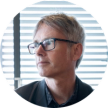
OUR THOUGHTSTraining
Mapping Lean Principles to SAFe® – Pt 2
Posted by Gareth Evans . Apr 05.21
In Part 1, we explored how the SAFe® Framework adapted existing Lean Principles to help shift organisational focus away from economies of scale to economies of flow. The Framework also developed a number of additional principles explored here in Part 2. Read Part 1 first which focuses on why SAFe® is the most closely-aligned Agile framework to Lean and the one which best translates Lean into the practical behaviours and activities which create the shift organisations urgently need. The additional SAFe® principles are….
Apply systems thinking
Systems thinking has a long history. It was first written about by Gerald Weinberg in An Introduction to General Systems Thinking in 1975, extended by Peter Senge’s The Fifth Discipline and summarised by Donella Meadows’s excellent Thinking in Systems. The core tenets seem obvious in hindsight, as many great ideas do.
The essence of systems thinking is to avoid local or small-scale optimisations at the expense of the overall system. For example, it is pointless if one team in a Value Stream (team of teams) is high-performing if the Value Stream is performing poorly.
When we apply systems thinking, we first need to identify the system we want to optimise. Conceptually, we could increase the bounds of the system as widely as we like – all the way to society in general. Here, we are interested in the organisation as a system. From a product development perspective, it makes sense to further bound the system as Value Streams which reflect the customer’s perspective of flow and value generated by the organisation. When we optimise a Value Stream as a system, the customer directly benefits, which in turn generates the best economic results. Improvements then cut across the organisation from a customer perspective rather than reflecting internal departmental local optimisations. By considering the circle of control or influence for improvements, people closest to the work can identify and action improvements with appropriate funding and organisational support.
Modern organisations use Lean Portfolio Management to fund, support and govern Value Streams. Creating alignment between funding and delivery helps promote flow and empowers Value Streams through decentralised decision making. Traditional organisational structures such as project funding and delivery lead to sub-optimal flow of value from a customer perspective. Projects often lead to local optimisation, where a well-resourced project may do well at the expense of another project, where the optimal solution from a customer perspective would be to do the most valuable parts of both. Projects often operate like air-conditioning units in the same building, competing with each other to control the temperature – burning resources to do unnecessary work leaving the customer out in the cold.
As with many great ideas, the way we implement them is key to the outcomes we achieve. Being aware of interactions between different groups optimising different system boundaries in the same organisation helps find the right balance. Appropriate cadence-based, dynamic events help provide reliable, fast feedback and guide transitions.
Build incrementally with fast, integrated learning cycles
When we have high levels of certainty and low levels of variability in work, then deterministic, long-range planning works well. That is not the world of modern software product delivery and is even further away from the world of digital transformation (or transition as we prefer to think of it).
When dealing with low levels of certainty in complex adaptive systems, we embrace experiments and learning. We also invest in our ability to ensure that the systems we build are only seconds away from a working state at any given time. When we need to evolve rapidly, it makes sense to invest in lowering the transaction cost of change and in creating transparency around the state of the system we are building.
We also value feedback highly. When we optimise for customer feedback, we invest in practices such as DevOps and progressive testing etc. to lower our cost-per-learning cycle. We accept that we can’t get it right first time (there is no one right way of doing things that can be determined up front), so we invest in our ability to learn faster than our competitors.
Base milestones on objective evaluation of working systems
Anyone been on a watermelon project – all green on the outside and glowing red on the inside? There are many reasons why organisations struggle to provide transparency around progress of work. One of the main critiques of traditional development was the inability to determine true progress of work as risk is pushed into the tail end of the project when integration and testing occurs.
Another reason organisations struggle is because of our human bias towards underestimation (planning fallacy and optimism bias) – we think things will take less time than they actually do, even if we’ve done them before.
When we base milestones on working software, we reduce risk. By working on smaller units of work and only taking credit for them when they are being used by our customers, then we get a more accurate sense of progress.
When we base milestones on working systems, we are able to truly gauge where we are and whether the opportunity cost of further investment stacks up against all the other things we could do, regardless of sunk costs.
Unlock the intrinsic motivation of knowledge workers
The pace of change in modern society is increasing. The average lifespan of companies is continuing to shrink. This means organisations need to learn, innovate and create faster and faster just to survive. Daniel Pink described creative work as being better achieved by people with autonomy, mastery and purpose. Whilst we all need enough money to survive, once we reach this point, then intrinsic motivation is derived from being able to respond to information and make decisions about how to improve the systems we work in and the products we make.
It also comes from having some capacity to learn and improve at what we do and having our own personal sense of purpose aligned with the organisations we work with. In the modern economy, many people are motivated by purpose rather than by profit and seek a lifestyle which supports learning and balance. This is a good thing and organisations that embrace and encourage this attain and retain the best people.
Most importantly, these organisations create the fertile ground required to grow talent and the next great ideas that may sustain them through this transition and the next.
Organisational culture has a significant impact on our ability to innovate and create. There is increasing evidence that we are more innovative and creative when we experience less fear and anxiety. Creating an environment of psychological safety not only makes people feel better, but helps us produce our best work.
Organise around value
How we organise ourselves must change from internally-focused measures of utilisation to external customer-focused measures. When we think about optimising our system based on what we might learn from customers, we end up thinking more about reducing delays and less about how busy each individual is in the system.
In the Golden Age, all organisations are software product companies – competing with all the other software product companies. This necessitates optimising based on a bunch of unpredictable customer needs – as Taichi Ohno famously outlined in the Toyota Production System (TPS) – reducing the time it takes from when a customer asks for something until when they get it.
When we organise around value, we understand our work from our customers’ perspective and organise around their needs. This motivates organisations to focus on the flow of value delivered to customers, rather than the performance of a single department or internal company driver. Organising around value and focusing on improving the flow of that value – Value Stream Management – will be the most important concept and management practice in the next decade… and the biggest shift we have seen in a generation.
So think of SAFe® as the tool which implements Lean
We think of SAFe® as the most appropriate, practical framework for implementing the set of ever-evolving Lean Principles. SAFe® is a framework that motivates adoption of Lean and Lean is what edits the DNA of an organisation. Changing the way it thinks, organises and acts – from a traditional focus on the utilisation of people in the system to a contemporary focus on the delivery and flow of value. To, and for, customers.
More Ideas
our thoughts
HYPR celebrates 10 years of The Pursuit of Relevance
Posted by Gillian Clark . Sep 03.24
The HYPR team recently gathered at our WorkerBee in Matakana for our regular meet-up, which also marked a special milestone… HYPR NZ's 10-year anniversary. A decade! Where does the time go? Gillian Clark reflects...
> Readour thoughts
Putting patterns to work
Posted by Gareth Evans . Nov 30.23
We’ve published a new case study that shows how we’ve used patterns to implement a flow-optimised ‘Delivery Ecosystem’ for a fintech client.
> Readour thoughts
Open for business. In Australia
Posted by Gareth Evans . Nov 27.23
After working across the Tasman to develop a nearshoring model, we’re delighted to announce HYPR’s formal entry into the Australian market.
> Readour thoughts
Product validation through continuous discovery
Posted by Gareth Evans . Sep 05.22
The tools and techniques to make sure we’re building the right thing are available to any enterprise. Are you really making use of them?
> Read